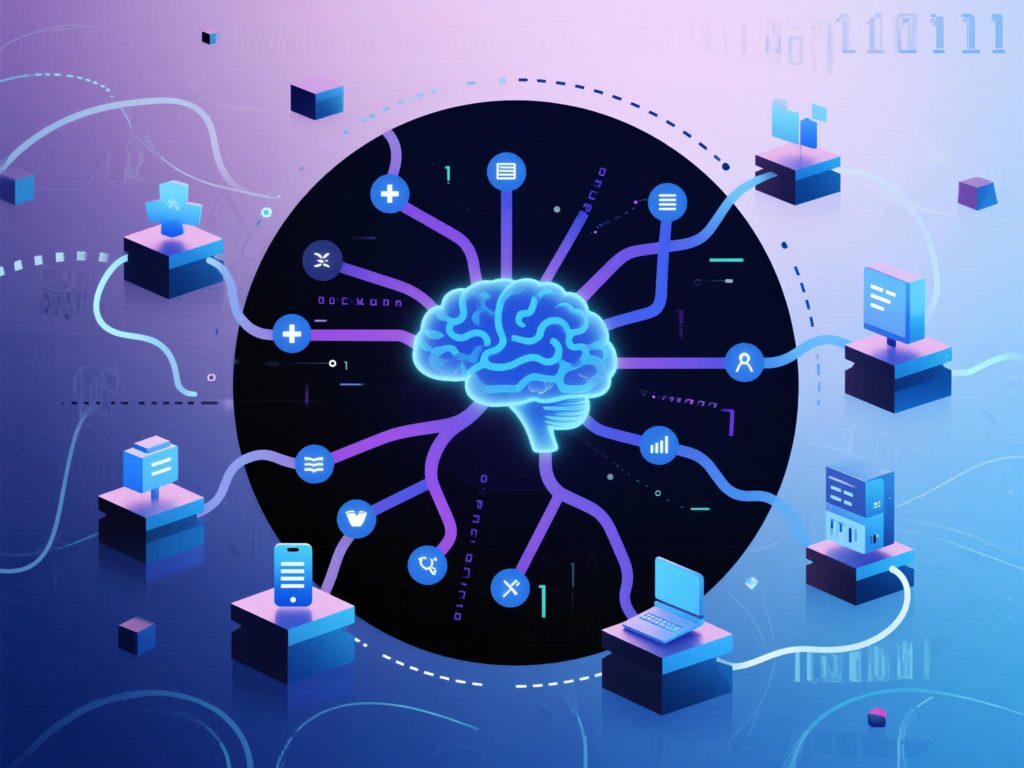TLDR
Generative AI startups face a unique challenge—creating groundbreaking technology is only half the battle. Success hinges on distribution: ensuring that advanced AI models, platforms, and tools reach their intended audiences. This article explores how distribution impacts generative AI companies, from the core theory behind distribution as the determining factor of success to the real-world channels and strategies that have driven breakthrough successes and notable failures.
It examines channels such as APIs, SaaS platforms, marketplaces, enterprise partnerships, and the bustling ecosystem built by open-source communities and influencer-driven campaigns, particularly on YouTube. By delving into case studies—from Hugging Face’s community approach to Runway’s influencer marketing and Kingy AI’s YouTube campaigns—the article explains how effective distribution channels fuel user growth, trust, and ultimately, the success of generative AI startups.
It also charts common pitfalls including onboarding friction, regulatory hurdles, and overreliance on a single channel, while offering actionable strategies for founders.

Introduction
In the landscape of generative AI, where models can generate art, text, and even complex data analyses, innovation is abundant. Yet, despite the breakthroughs in creating models that understand natural language and generate photorealistic images, many startups struggle to achieve scale. The underlying reason, increasingly recognized across industries and eloquently argued in Joan Westenberg’s essay “Everything is a Distribution Problem,” is that success depends not solely on the quality of the product but on its distribution.
For generative AI startups, distribution is about turning technical innovation into user adoption, market penetration, and, ultimately, transformational business impact.
Distribution in this context extends beyond marketing—it is a multi-faceted process that encompasses outreach, user education, integration, trust-building, and the creation of robust ecosystems. Influencers, open-source communities, and innovative channels such as YouTube play a critical role in spreading the word and creating viral loops that drive adoption.
This article provides an in-depth exploration of how distribution shapes the success or failure of generative AI startups, detailing strategies, channels, and challenges while providing concrete examples from the industry.
The Distribution Problem Revisited
Joan Westenberg’s perspective—that distribution is the key impediment to turning ideas into widespread success—resonates strongly in the generative AI field. Historically, breakthroughs in technology or art have faltered without effective dissemination. Westenberg argues that distribution is not merely about logistics but about overcoming the social, economic, and infrastructural challenges that prevent great ideas from finding their audience.
For generative AI, this means that even the best advances in neural network architectures or creative applications can fall short if end users, developers, or enterprises cannot access or integrate these tools into their daily operations. The success of giants like ChatGPT has shown that effective distribution channels—ranging from intuitive APIs to educational tutorials on platforms like YouTube—are essential for transformation. In short, while innovation provides the spark, distribution fans the flame of widespread adoption.
Defining Distribution in Generative AI
Distribution for generative AI startups encompasses all the tactics and channels used to move technologies from isolated proof-of-concept stages to ubiquitous tools in creative industries, business processes, and daily work routines. This includes a plethora of approaches such as:
• APIs and Developer Platforms: These allow developers to embed AI functionalities into their software, making robust capabilities available without requiring a deep technical background. APIs serve as the connective tissue between innovative models and real-world applications.
• SaaS Platforms: Generative AI companies often provide subscription-based solutions that package complex models within user-friendly interfaces, aiming at simplified adoption for various business functions.
• Marketplaces and App Stores: These digital arenas enable users to discover and purchase or subscribe to generative AI tools. They serve as important distribution points that help niche products gain exposure.
• Enterprise Partnerships: By aligning with established corporations, generative AI startups not only gain credibility but also access large-scale distribution channels and vast user bases.
• Open Source and Community Ecosystems: Open-source strategies empower a community of developers to iterate on and integrate generative AI models, thus facilitating continuous improvement and widespread adoption.
• YouTube and Social Media Influencers: Platforms like YouTube are increasingly vital for educating potential users, demonstrating practical applications, and building trust in generative AI tools. Influencers such as Kingy AI help demystify technology and create viral awareness through engaging content.
The multifaceted nature of distribution in generative AI highlights that the challenge is not just to build a superior model, but to ensure that the model is accessible, easy to integrate, and trusted by a wide audience.

Channels for Distribution: Deep Dive
APIs and Developer Platforms
APIs form the backbone of distribution for many generative AI startups. By abstracting the complexities of AI behind accessible endpoints, companies empower thousands of developers to integrate functionalities like natural language processing and image generation into their applications.
For instance, OpenAI’s API enables developers worldwide to build products that leverage powerful models such as ChatGPT and DALL-E without needing to manage the underlying infrastructure. Similarly, platforms like Hugging Face offer comprehensive model hubs that not only provide APIs but also foster a community dedicated to furthering AI research and application development. These strategies allow startups to extend their reach quickly, as seen in Hugging Face’s expansive repository of models and ongoing collaborations with industry giants.
SaaS Platforms
SaaS platforms in generative AI help lower the barrier for non-technical users by providing robust, ready-to-use applications. Tools like Jasper AI, for example, provide content-generation capabilities for marketers and content creators through a subscription-based model. By offering intuitive interfaces and targeted functionalities, these platforms run parallel to the more technical API-driven approach.
Jasper AI’s rapid growth illustrates how a SaaS approach—accompanied by free trials, affiliate marketing, and strategic influencer partnerships—can position a generative AI tool as an indispensable resource for its target market.
Marketplaces and Direct-to-Consumer Apps
Marketplaces and app stores are emerging as crucial distribution channels for generative AI. Platforms like PromptBase have transformed how users access generative AI by creating a marketplace for AI-generated prompts and customizations. These marketplaces offer users a way to purchase or trade creative inputs and outputs, merging commerce with innovation.
Additionally, direct-to-consumer apps that employ generative AI in novel ways—such as photo-editing or video creation apps—can harness the vast reach of app stores to establish a strong consumer presence quickly. By making the tools readily discoverable, these channels help speed up the adoption curve and solidify market presence.
Enterprise Partnerships
Collaborations with enterprise partners provide generative AI startups an invaluable boost in reliability and scale. For example, partnerships between leading tech companies and generative AI startups have paved the way for integrating AI functionality into well-established systems.
When Microsoft partnered with startups to integrate AI models into Azure’s cloud services, it not only gave these startups credibility but also provided them with the infrastructure necessary to handle large-scale demand. Such partnerships serve as an endorsement, assuring other potential enterprise clients of the technology’s robustness and scalability—a critical factor when trust is paramount.
Open Source and Community Ecosystems
The open-source movement has been a cornerstone of AI innovation. Initiatives such as the release of Stable Diffusion’s code by Stability AI illustrate the power of making advanced technology openly accessible. Open-source distribution has several benefits: it fuels rapid iteration, democratizes access, and builds a vibrant community around the technology.
Hugging Face, for instance, has cultivated a vast ecosystem of developers who contribute to an ever-expanding library of AI models, enabling accelerated innovation and widespread adoption. Open-source efforts create not only a pool of shared knowledge but also act as grassroots distribution channels that reinforce continual community enhancement and credibility.
YouTube and Influencer-Driven Distribution
YouTube has rapidly emerged as a leading platform for educating, inspiring, and motivating audiences about generative AI. Influencers dedicated to AI technology—most notably figures like Kingy AI—play a pivotal role in bridging the gap between complex technological concepts and mainstream audiences. Through detailed tutorials, product reviews, and live demonstrations, these influencers demystify how generative AI tools work and showcase their practical applications.
For example, Kingy AI’s channels have featured walkthroughs on integrating ChatGPT into everyday workflows, enabling audiences to see first-hand how generative AI can transform tasks such as content creation and customer support. These channels not only drive user growth but also build trust by demonstrating the technology’s potential in a relatable manner.

Case Studies: Successes and Failures in Distribution
Success Stories
• Runway: Runway’s generative AI video editing tools have taken advantage of YouTube’s expansive reach. By providing tutorial videos and partnering with creative influencers, Runway has established itself as a valuable resource for video content creators. Their successful “behind-the-scenes” content and user case demonstrations have helped the company secure partnerships with media outlets and creative institutions. This success story emphasizes how leveraging influencer marketing, particularly on YouTube, can amplify a product’s utility and reach.
• Hugging Face: Hugging Face’s open-source philosophy has been paramount to its success. By democratizing AI through accessible models and fostering a vibrant developer community, Hugging Face has become a household name in the AI research and development space. Their community-driven repository not only provides a distribution mechanism but also continuously fuels product improvement through user feedback and collaborative projects. Partnerships with tech giants like Microsoft further boosted its credibility and market reach.
• Jasper AI: Jasper AI’s rapid ascent in the content creation arena is largely attributed to its aggressive influencer marketing strategy and free trial offerings. By partnering with digital marketing influencers who showcased the tool’s ability to convert brief creative prompts into engaging content, Jasper AI quickly built a solid user base. This strategy, combining free trials with online influencer endorsements, demonstrated that a focused distribution strategy could outweigh even the stiff technical competition.
Cautionary Tales
• Artifact: Despite being developed by the Instagram co-founders, Artifact—a news curation app—failed to gain sustained traction largely because it did not invest adequately in a robust distribution strategy. Relying mainly on the reputations of its founders without establishing strong distribution channels, artifact’s potential remained underutilized, ultimately leading to its downfall. This illustrates that even products with immense potential require a well-thought-out distribution approach to succeed in a crowded market.
• Ghost Autonomy: Although not strictly in the generative AI domain, the experience of Ghost Autonomy—a startup in the autonomous driving space—highlights the perils of neglecting distribution. While the startup excelled technically, its failure to forge meaningful partnerships and build a clear distribution blueprint led to its premature shutdown. The lesson governing both AI and non-AI ventures is clear: product quality must be matched with strategic distribution planning.
Community, Virality, and the Open-Source Factor
The success of generative AI models is now strongly linked to the power of community-led distribution. Open-source strategies have democratized access to technology, allowing enthusiasts and professionals to experiment, improve, and share cutting-edge developments.
An excellent example is Stable Diffusion, whose open-source release has catalyzed a massive wave of community engagement. Developers and digital artists adapt and integrate the model into myriad creative applications, thereby extending its reach far beyond what a closed system could achieve.
Social media platforms amplify these effects further. Viral phenomena—ranging from AI-generated art that becomes an internet sensation to humorous and impressive demonstrations of AI’s creative capabilities—help to demystify sophisticated technologies and foster a mass-market appeal.
As user-generated content proliferates on platforms like TikTok, Instagram, and YouTube, the organic reach of generative AI tools expands exponentially. This viral distribution not only enhances user growth but also embeds AI technology into the cultural zeitgeist, making it progressively harder to ignore.
Common Pitfalls and Challenges in Distribution
Despite the wealth of opportunities, generative AI startups face several unique challenges when it comes to distribution.
Onboarding Friction and Integration Complexity
One of the primary hurdles for generative AI startups is onboarding users. Unlike conventional software applications, many AI tools are technically complex and require significant knowledge to integrate effectively. This creates a steep learning curve for developers and businesses alike.
For example, while APIs provide powerful functionalities, insufficient documentation or complex integration processes can deter adoption. Startups must invest in creating clear, concise, and accessible onboarding resources, including tutorials, developer forums, and customer support services, to reduce friction.
Trust, Ethical, and Regulatory Concerns
Generative AI’s transformative potential is coupled with serious trust and ethical considerations. Issues such as data privacy, the potential for bias, and the misuse of generated content (including deepfakes and misinformation) demand careful management. Startups lacking transparent methodologies or ethical guidelines risk alienating users and regulatory bodies.
Enterprises, in particular, are cautious about integrating technologies that may expose them to legal risks or reputational harm. Establishing robust ethical frameworks and transparent operational practices is essential for fostering trust among users and regulators alike.
Overreliance on a Single Distribution Channel
A common pitfall is overreliance on a single distribution channel. Generative AI startups sometimes bank too heavily on one avenue—be it a popular platform like YouTube or a proprietary marketplace—leaving them vulnerable if that channel’s dynamics change. Diversification across channels (APIs, SaaS, enterprise, open source, and influencer marketing) is imperative to build resilience, reach varied audiences, and mitigate risks associated with channel-specific disruptions.
Infrastructure and Cost Challenges
Generative AI technologies require significant computational power for both training and inference. This technical requirement can impede distribution if startups are unable to scale their infrastructure effectively. High operational costs and the need for robust cloud or on-premise solutions can limit growth, especially for startups with limited funding. Addressing these challenges through strategic partnerships (e.g., leveraging cloud providers like Microsoft Azure or Amazon AWS) is key to ensuring scalability and reliability in distribution.
Regulatory and Legal Hurdles
As regulatory landscapes evolve, particularly concerning AI, startups must navigate complex legal frameworks that can act as barriers to distribution. Issues related to copyright infringement, data handling, and compliance with emerging AI regulations can stall deployment and erode market confidence. Proactively engaging with regulatory bodies and staying abreast of legal changes is necessary to ensure smooth distribution and sustained growth.
Actionable Strategies for Effective Distribution
Given the multi-layered challenges and opportunities in distribution, generative AI startups must adopt a holistic strategy. Several actionable strategies emerge from the synthesis of research and real-world experiences:
• Invest in Robust Onboarding: Develop clear documentation, video tutorials, and community-led support channels. Utilizing platforms like YouTube for step-by-step guides can lower the learning curve and enhance user adoption.
• Diversify Distribution Channels: Avoid overreliance on one channel. Balance API integrations with SaaS offerings, open-source community engagement, and influencer marketing to create a resilient distribution network.
• Leverage Influencer Marketing: Collaborate with trusted AI influencers such as Kingy AI and other thought leaders. Their authentic demonstrations and user-centric tutorials can not only drive awareness but also build long-term trust.
• Foster a Vibrant Community: Engage and nurture developer communities via open-source projects, hackathons, and collaborative platforms like GitHub and Stack Overflow. This grassroots approach can lead to viral growth and continuous innovation.
• Establish Ethical and Transparent Practices: Address ethical concerns head-on by instituting transparent operational guidelines, data governance policies, and clear communication about AI limitations and safeguards. This is essential for building trust among enterprise customers and end users.
• Form Strategic Enterprise Partnerships: Build alliances with established market players to leverage their distribution networks, infrastructure, and credibility. These partnerships can provide both technical and market support, thereby accelerating growth.
• Monitor and Adapt to Regulatory Changes: Stay proactive with legal compliance and engage with regulatory bodies. This not only mitigates risk but also positions the startup as a responsible leader in the industry.
Conclusion and Future Outlook
Distribution is the lifeblood of any successful generative AI startup. The ability to seamlessly deliver AI-powered tools to the right users underpins everything from initial user adoption to long-term enterprise integration. As this article has detailed, an effective distribution strategy does not depend solely on technological prowess.
It involves a multi-pronged approach encompassing APIs, SaaS platforms, marketplaces, enterprise partnerships, open-source ecosystems, and strategic influencer marketing—especially on YouTube, where influencers like Kingy AI help demystify complex AI concepts for a broad audience.
The case studies reviewed illustrate that companies like Hugging Face, Runway, and Jasper AI have harnessed these channels successfully, while failures such as Artifact and Ghost Autonomy underscore the perils of neglecting a comprehensive distribution plan. More importantly, community, virality, and ethical considerations are emerging as indispensable components of this strategy.
In a rapidly evolving AI landscape, startups must balance innovation with practical outreach tactics to overcome onboarding friction, regulatory hurdles, and trust issues.
Looking ahead, the generative AI market’s potential is enormous. As models grow more sophisticated and applications more diverse, successful startups will be those that can balance groundbreaking innovation with strategic, well-rounded distribution. By leveraging multi-channel approaches and nurturing vibrant communities, generative AI companies can not only scale their technologies but also ensure that transformative capabilities reach every corner of society.
For founders and investors alike, the lesson is clear: in generative AI, distribution is not an afterthought. It is the central, ongoing process that converts technical breakthroughs into real-world impact. As conversations around ethical AI and regulatory oversight intensify, the companies that successfully integrate strong, ethical distribution frameworks will lead the next wave of industry transformation.
The journey from breakthrough idea to widespread impact is laden with challenges. Yet, with a clear focus on distribution, generative AI startups can unlock new avenues of growth, reach, and influence. By investing in robust onboarding, diversifying channels, leveraging YouTube and influencer marketing, and fostering an engaged community—all while navigating ethical and regulatory landscapes—these startups can transform innovative technology into a ubiquitous, value-generating force.
For further insights on building effective distribution strategies and for more detailed exploration of generative AI innovations, visit Medium and industry resources such as Hugging Face and Stability AI. The future of AI is not just in creating smarter models; it is in finding smarter ways to share them with the world.
In summary, distribution determines the fate of generative AI startups. The path to success lies not just in technical breakthroughs, but in ensuring that these innovations are accessible, trusted, and integrated into the workflows and lives of millions. Whether through the vibrant synergy of open-source communities or the amplified voices of YouTube influencers like Kingy AI, the effective distribution of AI technology is set to shape the future of our digital landscape.
By embracing these insights, founders can better navigate the complexities of scaling their innovations, turning technical prowess into widespread societal impact—and ultimately, ensuring that the transformative power of generative AI finds its full expression in the real world.










